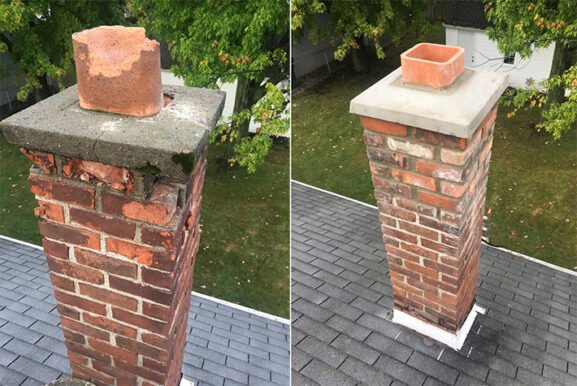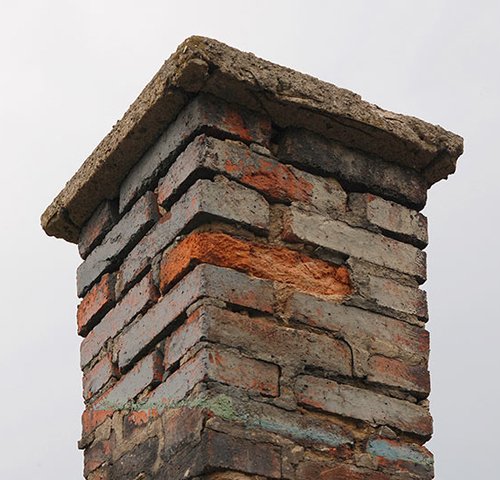Why Now Is the Right Time to Prioritize Brick Chimney Repair for a Safer and More Efficient Home
Key Takeaways
- Small cracks in brick chimneys can lead to major structural and safety issues if left unaddressed
- Moisture intrusion is a leading cause of chimney deterioration and should be managed promptly
- Professional inspections and timely repairs can extend the life of your chimney and reduce future costs
- Regular maintenance prevents heat loss and ensures your fireplace system runs efficiently
Understanding Why Brick Chimneys Deteriorate Over Time
Brick chimneys are durable, but they’re not immune to wear and tear. Over the years, exposure to harsh weather, temperature fluctuations, and moisture can break down the masonry. Freeze-thaw cycles, in particular, pose a major threat in colder climates. Water seeps into small cracks, freezes, and expands, causing the bricks and mortar to crumble. This is known as spalling, and it’s one of the most common reasons homeowners seek brick chimney repair.
Besides weather, other contributors to chimney deterioration include poor construction practices, the use of low-quality mortar, or neglecting routine inspections. Even tree branches constantly brushing against a chimney can gradually weaken the structure.
Why Delaying Repairs Can Lead to Bigger Problems
Ignoring a damaged brick chimney can cost more than just the price of repair. Structural instability is a real danger. As bricks loosen and mortar erodes, the chimney can lean or even collapse, putting your home and family at risk.
Water damage is another pressing concern. Once the brickwork begins to fail, moisture can enter the chimney system and eventually reach your attic or walls. This can cause mold growth, wood rot, and even damage to ceilings and insulation. A damp chimney can also lead to creosote buildup, which increases the risk of chimney fires.
According to the Chimney Safety Institute of America (CSIA), creosote is one of the top contributors to chimney fires, especially when combined with poor masonry conditions.
Signs Your Brick Chimney Needs Immediate Attention
Some signs of chimney trouble are visible to the naked eye, while others require a closer inspection. Watch for:
- Cracked or missing mortar joints
- Flaking or crumbling bricks (spalling)
- White staining on the bricks (efflorescence)
- Rust on the damper or firebox
- Leaning or tilting structure
If you notice water inside your firebox after a rainstorm or hear dripping sounds, that’s a red flag that water is infiltrating the chimney system. These signs indicate the need for a professional evaluation and likely repair.
The Importance of Tuckpointing and Repointing
Tuckpointing is one of the most common brick chimney repairs. It involves removing deteriorated mortar and replacing it with new mortar that closely matches the original in color and composition. Repointing, a similar process, strengthens the structural integrity of the chimney by restoring the mortar joints.
These repairs not only stabilize the chimney but also protect it from future moisture damage. They’re most effective when done before bricks begin to fall apart or gaps grow too large. When done by experienced masons, the repairs can extend the chimney’s lifespan by decades.
Waterproofing Helps Prevent Further Damage
Water is the biggest enemy of a brick chimney. Once it seeps in, it accelerates the freeze-thaw damage cycle and contributes to structural decay. Applying a breathable, vapor-permeable waterproofing agent can help keep moisture out while allowing any internal moisture to escape.
It’s critical to use the right type of waterproofing product. Avoid surface sealants that trap moisture inside the bricks, as they can worsen the problem. Most professionals use siloxane-based treatments that provide long-lasting protection without altering the appearance of the masonry.
When Crown Repair or Replacement Is Necessary
The chimney crown—the cement layer that covers the top of the brick structure—is often overlooked. However, it plays a vital role in keeping water out. Cracks in the crown can allow rainwater to seep into the masonry below, leading to the same spalling and erosion that affect bricks and mortar.
If the crown is in poor condition, it may need to be repaired with a crown sealant or replaced entirely with a new concrete pour. In either case, addressing the crown early can prevent the need for more extensive repairs later.
Considering a Chimney Cap for Extra Protection
Adding or replacing a chimney cap is another practical step during a brick chimney repair project. The cap helps keep rain, snow, debris, and animals out of the chimney flue. A good-quality stainless steel or copper cap also prevents downdrafts and helps extend the life of the chimney.
If your cap is rusting or missing, it’s worth including in your repair plan. A well-fitted chimney cap works hand-in-hand with a healthy crown and sealed bricks to form a comprehensive moisture defense.
Hiring the Right Professionals for the Job
Brick chimney repair is not a DIY-friendly task. It requires skill, specialized tools, and a strong understanding of masonry behavior. Improperly matched mortar or rushed work can actually cause more harm than good. That’s why hiring certified professionals with experience in chimney systems is essential.
When choosing a contractor, look for credentials from organizations like the CSIA or National Fireplace Institute. Make sure they have clear references, insurance, and knowledge of local building codes. An experienced technician can spot hidden problems and offer tailored solutions that go beyond surface fixes.
Long-Term Benefits of Maintaining a Brick Chimney
Investing in brick chimney repair pays off in multiple ways. It protects your home’s structure, enhances safety, and preserves the beauty of your exterior architecture. It also ensures your fireplace functions efficiently, reducing heat loss and improving indoor comfort during colder months.
Regular inspections and maintenance not only extend the lifespan of the chimney but also help you stay compliant with insurance and home safety standards. A well-maintained chimney adds to your home’s value and reduces the chance of emergency repairs that often cost more and take longer to complete.
Final Thoughts on Protecting Your Home with Timely Chimney Repairs
Repairing a brick chimney isn’t just about aesthetics—it’s a proactive step that keeps your home safe, efficient, and structurally sound. Whether you’re dealing with minor mortar damage or significant moisture intrusion, the best time to act is before small issues turn into costly emergencies.
By understanding the warning signs, prioritizing key repairs like tuckpointing and crown sealing, and working with certified professionals, you’ll be taking smart steps to preserve your home for years to come.

